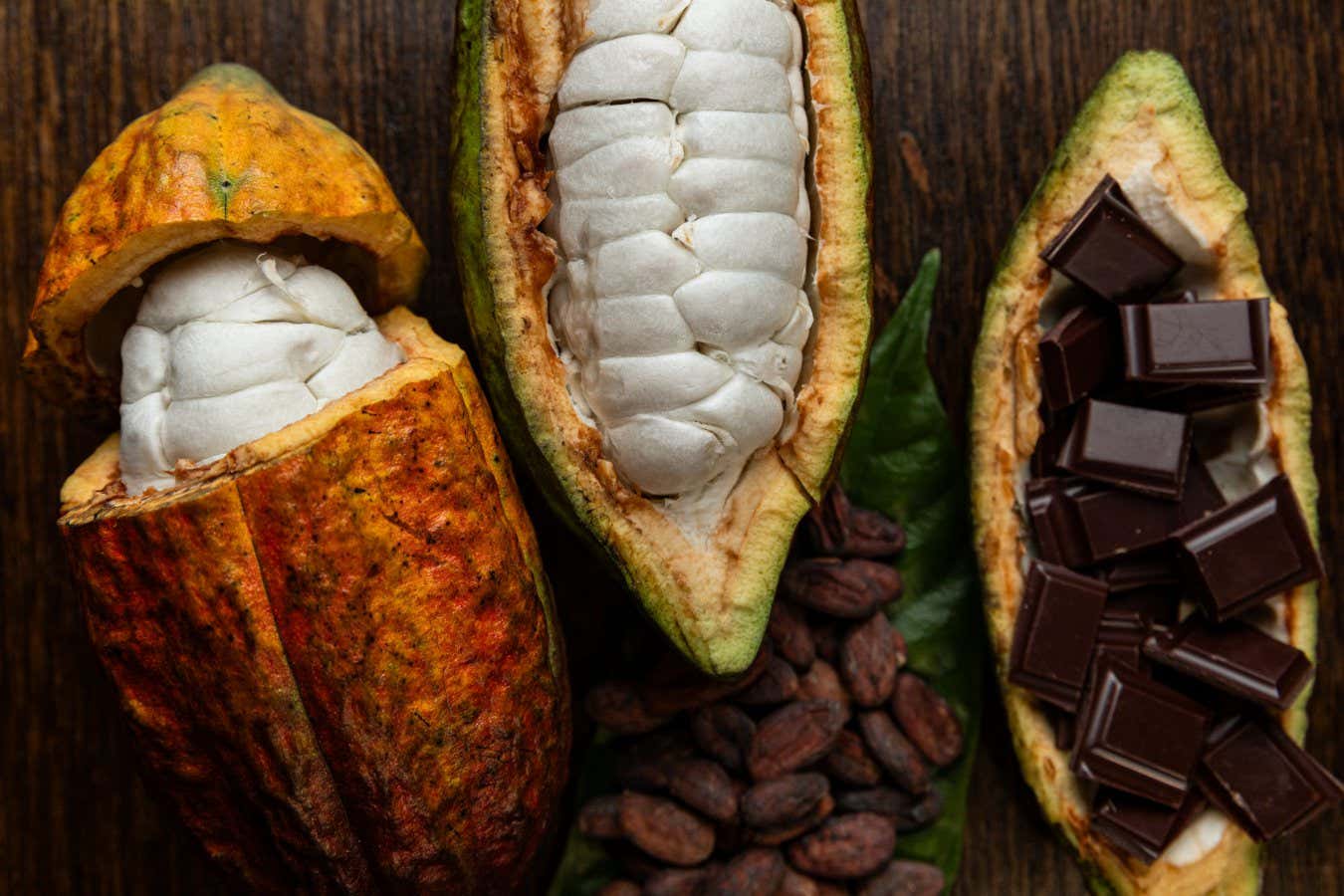
Chocolate is made by fermenting cocoa beans, which come from the fruit of cacao trees
Mimi Chu Leung
We could soon taste new kinds of chocolate after the discovery of fungi and bacteria that produce fruity and caramel notes from cocoa beans.
Chocolate is typically made by fermenting cocoa beans from the fruit of cacao trees, drying them, roasting them and then grinding them up into a paste that is separated into cocoa butter and cocoa solids. These are then mixed in varying amounts with other ingredients to produce dark, milk or white chocolate.
During the fermentation step, microbes that come from the surrounding environment digest parts of the cocoa fruit and produce various molecules that contribute to chocolate’s flavour. In most cases, this brings dark, woody flavours, says David Salt at the University of Nottingham, UK. But finer chocolate also has fruity flavours, often found in products sold by boutique chocolate makers, he says.
To find out which microbes may produce such flavours, Salt and his colleagues collected samples of fermenting beans from cocoa farms in Colombia. By analysing genetic material in the samples, they identified five bacteria and four fungi that were consistently found in batches of beans that produced fine-flavoured chocolate.
The team then took cocoa beans that were sterilised to carry no other microbes and used the nine microbes to ferment them, before grinding the beans into a liquid, known as a cocoa liquor. A handful of chocolate-tasting experts then assessed the liquor and found it had various fruity notes that weren’t present in liquors made from beans that lacked these microbes. “Adding those microbes gave it citrusy flavours, berry flavours, flowery flavours, tropical fruit and caramel flavours,” says Salt.
The findings suggest that adding these microbes to fermentation mixtures could help cocoa growers improve the flavour of their cocoa and, in turn, make more profit from their beans, says Salt.
“We don’t necessarily need to give them a sample of the nine microbes – there are almost certainly practical things they can do to bias their microbiome in the right direction. For instance, we could tell them that some of the fungi they need are on the outside of cocoa pods, so why don’t you whack a bit of the outside of a pod in there?” he says.
However, the set of microbes that produce fine flavours may differ in cocoa farms beyond Colombia, where differences in the climate, for instance, may alter which ones thrive. Further studies are needed to explore this, says Salt.
Still, the study suggests that specific microbes can enhance the flavour of chocolate, and could even do so for kinds made with lab-grown cocoa, says Salt. What’s more, it indicates that selecting novel microbial mixtures could even produce entirely new kinds of chocolate, he says.
Topics:







